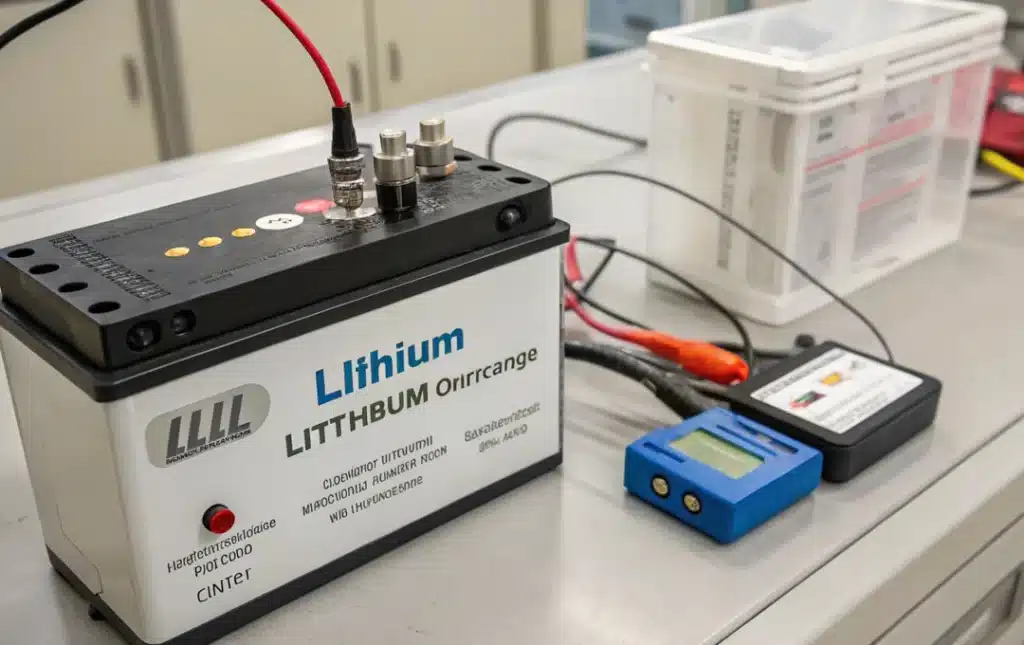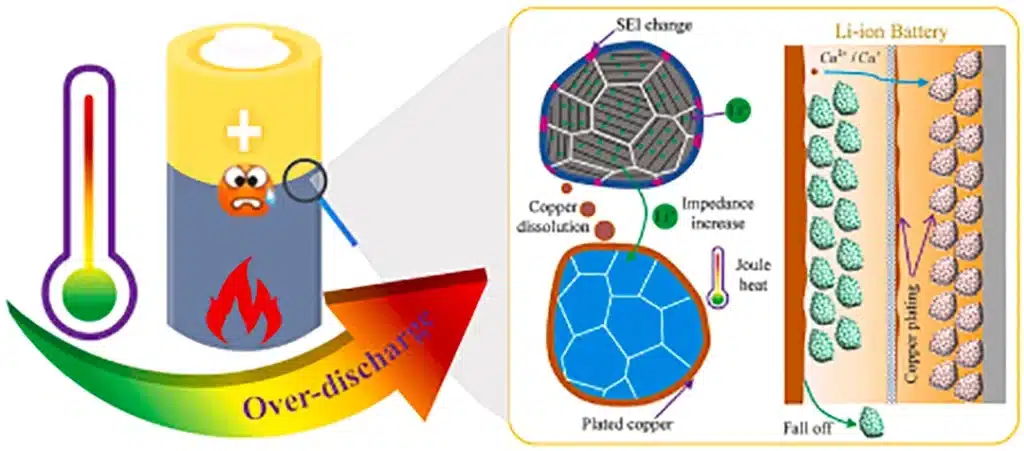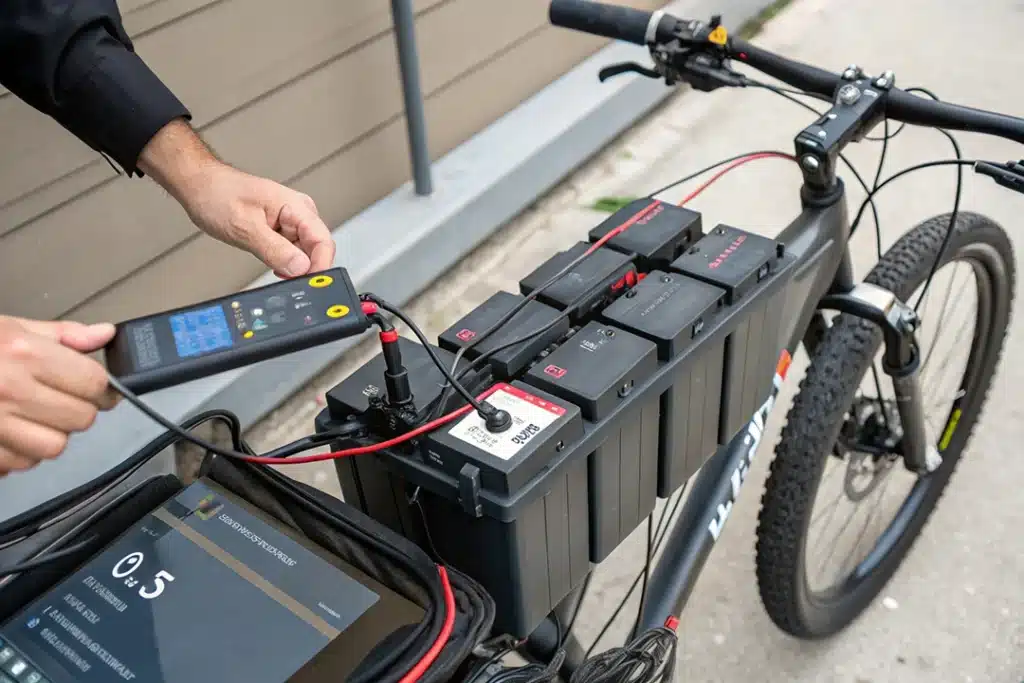When your electric car suddenly fails to start, or the battery of a device that has been stored for a long time fails to charge, it is likely that the lithium battery has entered a dormant state. Dormant lithium batteries are not completely damaged, and they can be safely and effectively awakened through the correct method. This article will provide you with a professional lithium battery activation guide to help you solve this common problem.
Last updated: May 2025 | Estimated reading time: 8 minutes

This article will answer your questions:
- What is the dormant state of lithium batteries and how to determine whether the battery is dormant.
- Why lithium batteries enter dormant state or fail.
- Common incorrect activation methods and their potential dangers.
- Professional recommended methods for safely activating lithium batteries of different voltages such as 12V and 36V.
- How to properly maintain lithium batteries to prevent them from entering dormant state.
Table of Contents
ToggleWhat is lithium battery hibernation?
Lithium battery dormancy refers to a state where the battery voltage drops below the cut-off threshold of the protection board due to long-term disuse or over-discharge, resulting in the inability to charge and discharge normally. In this case, the battery appears to be “dead”, but in fact the protection mechanism is activated and requires scientific methods to wake it up, rather than simply charging normally.
When you encounter the following situations, it is likely that the lithium battery has entered a dormant state:
- The device cannot be turned on or charged after long periods of non-use.
- The indicator light does not light up or flashes abnormally after the charger is connected.
- The battery voltage measurement is abnormally low (e.g., the measurement value of a 12V battery is less than 9V).
- The device does not respond when connected to the charger, but there is no obvious damage to the battery appearance.

The difference between hibernation and corruption
There are clear differences between a dormant lithium-ion battery and a completely dead one. Knowing these differences can help you decide if a battery is worth reactivating:
| State Characteristic | Dormant Battery | Damaged Battery | Practical Significance to You |
|---|---|---|---|
| Appearance | No visible deformation or leakage | Possible swelling, leakage | Dormant batteries can usually be safely activated. |
| Voltage Measurement | Very low but stable | Unstable or zero | Stable low voltage indicates it can be restored. |
| Temperature | Normal temperature | Possibly abnormally hot | Abnormal heat indicates an internal short circuit, dangerous. |
Self-test method: Determine whether the battery can be activated
- Measure with a multimeter: If the voltage reading is stable but lower than normal, it can usually be activated.
- Observe the charging attempt: Connect the original charger for 5-10 minutes, if there is a weak reaction, it may be recovered.
- Check the usage history: If the battery is not working due to long-term disuse rather than sudden failure, it is more likely to be recovered.
One customer’s electric bicycle lithium battery could not be charged after being shelved for half a year, and the voltage was measured at only 5.8V (normal should be 36V). After professional activation, the battery resumed normal function with only about 10% loss in capacity.
To learn more about lithium battery health, please refer to our everything you should know about bad battery.
What is the reason for lithium battery dormancy/failure?
There are three main reasons why lithium batteries enter a dormant state: electrode passivation, long-term over-discharge, and improper storage conditions. Understanding these reasons will help you take the correct activation methods and preventive measures.
Electrode passivation phenomenon
When lithium batteries are not used for a long time, a passivation film will form between the electrolyte and the electrode material, which will hinder the ion transmission. This will increase the internal resistance and cause the battery to not work properly. This is just like the accumulation of scale in a water pipe after long-term use, which hinders the flow of water.
It is common in the following situations: the battery is stored in a high temperature environment (over 35°C), the battery is stored for more than 3 months without maintenance or charging, and the battery is stored for a long time in a state close to full discharge.
Effects of over-discharge
The protection circuit of lithium batteries is usually designed to cut off the circuit when the battery voltage is lower than a certain threshold to prevent excessive discharge from damaging the battery. However, even after the circuit is cut off, the battery will still slowly self-discharge, eventually leading to a deep discharge state.
Common over-discharge situations include: the device is not used for a long time and is stored without pre-charging, the device is accidentally turned on, causing the battery to be completely discharged, and a device with a small current leakage is connected.

Temperature and storage conditions
Lithium batteries are extremely sensitive to storage environments. Temperatures that are too high or too low will accelerate battery dormancy or failure:
- High temperature environment (over 40°C): accelerates electrolyte decomposition and increases self-discharge rate.
- Low temperature environment (below 0°C): slows down lithium ion activity, which may cause lithium precipitation and internal damage.
- Extreme humidity: may cause oxidation of the battery’s external contacts and increase contact resistance.
Wrong activation method
When trying to activate dormant lithium batteries, many people use methods circulating on the Internet, but some of these methods are not only ineffective, but can also cause serious dangers.
12-hour activation method
The saying that “the first three charges need to be fully charged for 12 hours” comes from the nickel battery era and is completely inapplicable to lithium batteries. Lithium batteries have no memory effect, and overcharging will damage the health of the battery.
This incorrect practice may lead to battery overheating and thermal runaway, accelerate electrolyte decomposition and positive electrode material degradation, and shorten the overall battery life.
Direct contact with battery terminals
Using an external power source to directly connect the positive and negative terminals of the battery for “forced charging” is an extremely dangerous practice that may lead to serious safety accidents. It bypasses all protection mechanisms and is highly risky.
This practice may cause the battery to short circuit, catch fire or explode, instantly releasing a large amount of heat energy and causing permanent damage to the battery.
Other common mistakes
- Freezing/heating the battery: Extreme temperatures will accelerate the degradation of the battery’s internal materials.
- Overcharging with high voltage: Exceeding the battery’s rated voltage will damage the internal chemical structure.
- Using an unmatched charger: Incorrect current/voltage parameters will damage the battery.
In 2024, according to national fire department statistics, approximately 35% of electric vehicle fires were related to improper battery operation, including incorrect battery activation attempts. Safety should always be the top priority.
Correct activation method
Depending on the dormancy level and voltage level of the lithium battery, different safe activation methods can be used. Below are professional activation techniques categorized by battery type and condition.
How to activate a light dormant lithium battery
When the battery is in a mild dormant state (the voltage does not drop more than 50%), you can try the following methods:
- Low current wake-up method: Use a low current of 0.1C-0.2C to charge for 30 minutes, then switch to normal charging.
- Intermittent charging method: Alternate 5 minutes of charging and 10 minutes of rest, repeat 3-5 times, then switch to normal charging.
- Use a professional lithium battery charger with a “wake-up function”, which can automatically detect and wake up dormant batteries.

How to wake up a 12V lithium battery
Step current charging:
- Stage 1: Use 0.1C current (about 100-200mA) to charge until the voltage reaches 9V
- Stage 2: Switch to 0.2C current and continue charging until the voltage reaches 10.8V
- Stage 3: Use a standard charger to complete the charging process
Parallel auxiliary activation:
- Connect a healthy 12V lithium battery in parallel with the dormant battery
- Disconnect after 30 minutes
- Use the original charger for normal charging
| 12V Lithium Battery Voltage | Activation Difficulty | Recommended Method | Expected Success Rate |
|---|---|---|---|
| 8-9V | Low | Standard Charger | 90%+ |
| 5-8V | Medium | Low-Current Pre-Charge | 70-80% |
| 3-5V | High | Stepped Charging | 50-60% |
| <3V | Very High | Professional Repair | Below 30% |
How to wake up 36V/48V electric vehicle lithium battery
Protection board reset method:
- Connect the battery to the original charger for 5-10 seconds and then disconnect.
- Repeat 3-5 times, which may trigger the protection board to reset.
- Connect the charger for normal charging.
Pulse repair method:
- Alternate 5 minutes of 0.5C charging and 10 minutes of rest.
- After 5 cycles, switch to normal charging procedure.
- Monitor battery temperature to ensure it does not exceed 40°C.

Professional activation technology for deep dormant batteries
For deep dormant lithium batteries (extremely low voltage or long-term unused for more than 1 year), the following professional methods are recommended:
- Voltage step method: Use a lower voltage (such as a 36V battery using a 24V charger) for pre-charging for 30 minutes, and then use the original charger.
- Constant current and voltage limited charging: Use an adjustable current power supply, starting from a very low current (0.05C) and slowly increasing to the standard charging current.
A customer’s 48V electric bicycle battery could not be charged at all after being stored for 5 months in winter. After precharging with a 36V charger for 20 minutes, the battery voltage rose to 38V. At this time, switching to the original 48V charger successfully restored the battery function.
Preventive maintenance of lithium batteries
Correct maintenance habits can effectively prevent lithium batteries from entering a dormant state and extend their service life. The following are preventive maintenance recommendations for different usage scenarios.
- Avoid full discharge: Try to charge the battery before it drops to 20% and avoid deep discharge.
- Moderate charging: Ideally charge the battery to 80-90% and avoid keeping it at 100% for a long time.
- Regular use: Even if you don’t need to use the device, you should complete a charge and discharge cycle at least once a month.
- Avoid extreme temperatures: Try to use and charge in an environment of 10-35°C.

How to store lithium batteries for a long time
If you need to store lithium batteries for a long time (more than 1 month), please follow the following suggestions:
- Charge to 40-60% before storage: Neither fully charged nor empty, this is the best state for lithium battery chemical stability.
- Choose a suitable environment: a dry environment with a temperature between 0-20°C and a humidity below 65%.
- Regular maintenance charging: perform a charge and discharge cycle every 3 months to maintain battery activity.
- Avoid stacking and squeezing: ensure good ventilation and avoid contact with metal objects.
Special maintenance tips for different types of lithium batteries
| Battery Type | Optimal Charging Range | Storage Recommendations | Special Maintenance Points |
|---|---|---|---|
| Electric Vehicle Battery | 20%-80% | Remove and store separately if unused for 6 months | Avoid rain and exposure to high temperatures. |
| Mobile Phone Battery | 30%-80% | Remove battery if storing long-term | Avoid frequent use of fast charging. |
| Tool Battery | 30%-70% | Store separately from the tool | Clean the contacts after use. |
| Laptop Battery | 40%-80% | Remove battery for long-term storage | Complete a full charge/discharge cycle monthly. |
The latest development and trend of lithium battery activation technology in 2025
- Self-activating protection circuit: The next-generation protection circuit integrates a self-activating function that automatically initiates the repair process when a deep discharge state is detected.
- Graphene composite electrode: The graphene composite electrode material that will be commercialized at the end of 2024 significantly reduces the passivation tendency of the battery.
Market data shows that by 2025, about 65% of the world’s mid-to-high-end lithium battery products will have integrated some form of dormant self-recovery function, a significant increase from 38% in 2023. This trend is expected to reduce the premature scrap rate of lithium batteries due to dormancy by about 40%.
Conclusion
Lithium battery dormancy is a common but solvable problem. The key is to understand its principles and use the correct activation method. With the professional technology introduced in this article, most dormant lithium batteries can be safely and effectively awakened and restored to use.
Hongyitai has been focusing on lithium-ion battery production for more than 10 years, helping customers in 100 countries and regions around the world to customize lithium-ion batteries. Our products include high-performance electric vehicle batteries, industrial energy storage batteries and various portable device batteries. All products have passed strict quality control and safety tests. Click on our official website to view our products.
FAQs
For completely "starved" (extremely low voltage) 12V lithium batteries, pre-charge them with a 9V charger for 20-30 minutes, and then use the original charger to complete the charge after the voltage rises back to 7-8V. Monitor the temperature closely during the process to avoid overheating of the battery. The success rate is about 50-60%.
After a lithium battery is properly activated, it will usually lose 5-15% of its original capacity, depending on the duration and depth of dormancy. A battery that has been dormant for less than 3 months will lose less capacity (about 5%), while a battery that has been in deep dormancy for more than 1 year may lose 15-20% of its capacity.
Although dedicated chargers with a "wake-up function" work best, ordinary chargers can also activate most dormant batteries with the right method. The key lies in the use of low-current pre-charge or voltage step technology, not the charger itself.
